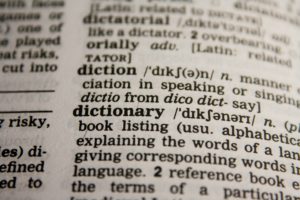Grammar versus Lexis: A Journey to an Eclectic Approach to Language Teaching
Why we Believe the inlingua Method is Better than Other Methods
Although the inlingua methodology is based on the Direct Approach of language teaching, some aspects of other approaches and methods have been integrated over the last 50 years. In this blog post, I look at some of these developments in language teaching and how the inlingua method has absorbed their qualities to develop the eclectic methodology we use today in inlingua language classes: either live or virtual. This is intended to give the reader a brief overview and is not an in-depth discussion.
Grammar-Translation Method
Prior to the introduction of the Direct Method, the standard way to teach language was the Grammar-translation method. This emphasized the learning of grammar rules. Vocabulary was learned by translation from the learner’s native tongue. This method is useful for academics learning languages that are rarely spoken like Latin or Ancient Greek, but was not ideal for modern language learning where speaking was the main skill required.
The inlingua method avoids translation as a way to learn a language as discussed in my first blog in this series, but as I mention, most learners will find themselves translating a bit, mentally, at the beginning of learning a new language until the new language has established itself in their brains.
Structural Approach
In the early stages of language learning, it may be said that the inlingua method has certain aspects of the Structural Approach.
This is reflected in some language drilling exercises, but the inlingua method does not apply the drills in in such a ‘parrot fashion’ way and the language is more contextualized. However, the argument that the Direct Approach and Structural Approach come from behaviorist theory has some truth in it. Another similarity is that the language is presented in the spoken form before the learners are exposed to the written form.
Oral Approach/ Situational Language Teaching
Developed by linguists Harold Palmer and A.S. Hornsby, this approach is often not identified, but often used in language teaching. For inlingua, the use of context as a principle and the integration of reading, writing and listening skills to complement the main focus of speaking can be seen as this approach in application. Click here for a summary.
Audiolingual Method
Aspects of this method are apparent in the drilling techniques used for oral practice to enforce language patterns in inlingua classes, but with the inlingua method, it is trainer-led and integral that the learners are clear on the meaning and usage of the language practiced as well as the specific context. One strong similarity is that reading and writing skills may be taught, but they are dependent to a great extent on the oral skills. For a short video about this method click here.
Natural Approach
Developed by Stephen Krashen and Tracey Terrell in the 70s, many of the techniques proposed in this approach, like using roughly-tuned input and the natural order hypothesis, have been absorbed in the inlingua method. The main idea that learners can pick up a new language in a similar way to children runs complementary to the Direct Approach. More.
Total Physical Response
Associating language with movement is also employed in the inlingua method.  Learners are often encouraged to mime actions at the beginner stage or to role play during pairwork and mix in groupwork. This helps to give the language more meaning as it is no longer dependent simply on spoken or written language. For a greater insight to this method click here.
Learners are often encouraged to mime actions at the beginner stage or to role play during pairwork and mix in groupwork. This helps to give the language more meaning as it is no longer dependent simply on spoken or written language. For a greater insight to this method click here.
The Silent Way
This approach is integral in the inlingua method. As most of the inlingua lesson is devoted to the skill of speaking, it is important that the learners have the maximum amount of lesson time in which to practice speaking. This requires the trainer to employ techniques to reduce Teacher Talking Time in favor of the learners. See also The Silent Way summary.
Communicative Language Teaching
Although language is introduced and practiced with the inlingua method in a seemingly mechanical way in the early stages, a rapid progression to more realistic communication is encouraged. This is mostly apparent in the production stage (see my previous blog post) where fluency is emphasized, and the language trainer’s corrections are reserved for a given slot in the production exercise so as not to interfere with the communication process – thus encouraging autonomy. More on CLT.
Total Immersion
Based on the observation that languages are best learned in a situation where the learner is rather forced to use the new language, the idea of total immersion is to create, as near as possible, a situation where only the target language is used in the classroom: rather like visiting a country where the native language is spoken.  This is one of inlingua’s language training principles and is essential for language learning in the inlingua classroom. Click here for a summary.
This is one of inlingua’s language training principles and is essential for language learning in the inlingua classroom. Click here for a summary.
Task-based Language Learning
Aspects of the Task-based language learning approach are apparent in the business skills modules produced by inlingua international where the aim is to perform in a business meeting, transaction or give a presentation.
The Lexical Approach
Leading on from Stephen Krashen and Tracey Terrell (see the Natural Approach), Michael Lewis developed a language learning theory which looks at language principally as lexical items rather than a grammatical structure around which words are added.
Although inlingua material can be viewed as introducing grammatical structures in a progressive manner, this is achieved though the introduction of language as vocabulary functions and structures (e.g. lexical chunks and collocations). Grammar is learned though example and use of the language rather than taught as in a course on linguistics. More on the Lexical Approach.
Connectivism
Connectivism is having a great influence on language learning at inlingua as we move towards new frontiers in learning. What we learn with has meant the ongoing development of programs and apps at inlingua’s international headquarters. The availability of our material for use on Smart phones and tablets has also influenced how and where we learn.
Virtual classrooms as well as extensive online study programs like inlingua online learning (iOL) have brought the inlingua learning experience to the learner’s fingertips and in their home or office.
 Blended learning programs such as inlingua Plus have also enabled flipped learning to be more commonly used. For a pros and cons discussion click here.
Blended learning programs such as inlingua Plus have also enabled flipped learning to be more commonly used. For a pros and cons discussion click here.
Conclusion
The inlingua method has absorbed and combined developments in language teaching while still maintaining its own unique set of principles (see below). This has led to the development of a rich eclectic methodology and materials which are continually being developed to meet the changing needs of today’s language learners.
inlingua principles:
- Target language only.
- Learn through speaking.
- Exemplify rather than explaining.
- Get the learners doing the talking.
- Get the atmosphere right.
- Handle learners’ language mistakes with care.
- Check before you train new language.
- Give learners opportunities to experiment.
- Have variety in your training.
- Use the three key techniques: Ask questions – Weave new language – Use coursebooks selectively.
Further Reading
For a summary of methods click here and here.
Next blog post: Listening and Reading in Class – How inlingua Material Helps ‘Learners to Learn’ not just’ Teachers to Teach’.
Peter Lambie, Method and Materials Consultant, inlingua International.